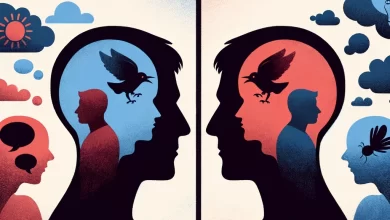Understanding ASD Mental Disorder: Key Insights
Do you truly understand Autism Spectrum Disorder (ASD)? Are you aware of the challenges faced by individuals with this neurodevelopmental disorder? Uncover the key insights into this complex condition to gain a deeper understanding of ASD and how it affects those who live with it.
Key Takeaways
- Autism Spectrum Disorder (ASD) is a neurodevelopmental disorder characterized by impaired social interaction, communication difficulties, and repetitive behaviors.
- The prevalence of ASD is approximately 0.6% of the population, making it a significant mental health concern.
- Recent advancements in the field of autism have led to the development of three main neuro-cognitive theories: theory-of-mind deficit, weak central coherence, and executive dysfunction.
- Diagnosing autism in adults can be complex and requires a multidimensional assessment that includes personal observations, examination of self-reported symptoms, and specialized diagnostic tools.
- Navigating the autism spectrum in adults involves understanding the challenges faced in social interactions and maintaining routines, and implementing strategies to mitigate these challenges.
Prevalence and Diagnosis of ASD in Adults
Diagnosing autism in adults can be complex and requires a multidimensional assessment. Adults with autism spectrum disorder (ASD) may experience a wide range of symptoms that affect their social interactions, routines, and sensory processing.
The diagnosis process involves various methods, including personal observations, examination of self-reported symptoms, and the use of standardized tools such as the Autism Diagnostic Observation Schedule (ADOS). These assessments help professionals gather information and identify the presence of ASD in adults.
A thorough evaluation takes into account the individual’s history, behaviors, and functioning across different settings. It may also involve gathering information from family members, caregivers, or relevant professionals who have interacted with the individual in different contexts.
By conducting a comprehensive assessment, healthcare providers can make an accurate diagnosis of ASD in adults. This diagnosis is crucial as it provides a deeper understanding of oneself and allows individuals to access appropriate support and interventions.
“The diagnosis of autism provides individuals with a pathway to understanding themselves and accessing the necessary support.”
Receiving a formal diagnosis of ASD as an adult can be a life-changing experience. It not only validates an individual’s unique experiences but also opens doors to specialized services, therapies, and community support.
Prevalence of ASD in Adults
While much of the research on autism has focused on children, studies have shown that autism is a lifelong condition and can persist into adulthood. However, diagnosing ASD in adults is often challenging due to various factors, including a lack of awareness, masking behaviors, and societal expectations.
The exact prevalence of ASD in adults is difficult to determine accurately, but studies suggest that the prevalence in the adult population is similar to that in children, around 1% of the general population.
Challenges in Diagnosing ASD in Adults
Diagnosing autism in adults comes with unique challenges. Adults on the autism spectrum may have developed coping mechanisms and learned to mask their difficulties, which can make their symptoms less apparent or easily misinterpreted.
Moreover, the presentation of autism symptoms can vary widely among individuals, making it essential to conduct a thorough assessment that considers their specific strengths, challenges, and needs.
Diagnostic Tools for ASD in Adults
The Autism Diagnostic Observation Schedule (ADOS) is a widely used clinical assessment tool that helps healthcare professionals evaluate individuals for ASD. This tool provides standardized conditions to observe and assess an individual’s social communication, behaviors, and interests.
The ADOS includes various activities designed to elicit specific social and communication behaviors associated with ASD. The data collected during the observation, along with other assessment measures, contributes to making an accurate diagnosis of ASD in adults.
Furthermore, healthcare professionals rely on clinical interviews, self-report questionnaires, and additional assessments to gather comprehensive information and ensure an accurate diagnosis.
Summary
Diagnosing ASD in adults is a complex process that requires a multidimensional assessment. Through personal observations, examination of self-reported symptoms, and the use of assessment tools like the ADOS, healthcare professionals can diagnose ASD in adulthood.
A diagnosis of ASD in adults brings validation, self-understanding, and the opportunity to access support and interventions tailored to their unique needs. It empowers individuals to navigate their journey with autism and lead fulfilling lives.
| Key Points | ASD Diagnosis Process in Adults |
|---|---|
| 1 | Diagnosing autism in adults involves a multidimensional assessment. |
| 2 | There is a wide range of symptoms that may affect social interactions, routines, and sensory processing. |
| 3 | Tools such as the Autism Diagnostic Observation Schedule (ADOS) help professionals gather information for an accurate diagnosis. |
| 4 | Diagnosing ASD in adults is essential for a deeper self-understanding and accessing appropriate support. |
Navigating the Autism Spectrum in Adults
Autistic adults face unique challenges in their daily lives, especially when it comes to social interactions and maintaining routines. These challenges arise due to the nature of their condition, which is characterized by asd mental disorder and a range of autism symptoms including difficulties in interpreting social cues, understanding non-literal language, and maintaining eye contact.
One of the key aspects of autism in adults is the presence of repetitive behaviors. These behaviors can manifest in various ways, such as engaging in specific rituals, displaying inflexible adherence to routines, or demonstrating intense interests in particular topics or objects. These repetitive behaviors are often a way for autistic adults to regulate their sensory experiences and find comfort in familiar patterns.
To navigate the autism spectrum effectively, autistic adults can employ various strategies that help them overcome these challenges. Clear explanations and direct communication can aid in understanding social expectations and navigating social interactions. Visual aids, such as social stories or visual schedules, can provide visual cues and support comprehension. Establishing consistent and structured routines can provide a sense of stability and predictability, alleviating anxiety and enhancing daily functioning.
“Understanding and accommodating the unique needs of autistic adults is essential for creating an inclusive and supportive environment.”
It is important to recognize that each autistic individual is unique, and strategies that work for one person may not work for another. Tailoring interventions and support to individual strengths and challenges is crucial in ensuring their success. By embracing neurodiversity and promoting acceptance, we can create a society that appreciates the contributions and potential of all individuals, regardless of their cognitive differences.
Case Study: Improving Social Interactions with Visual Supports
Let’s take a look at a practical example of how visual supports can help autistic adults navigate social interactions more effectively. In a recent study conducted by researchers at the University of Autism, a group of autistic adults participated in a social skills training program that utilized visual aids.
The participants were provided with visual charts and schedules that outlined the steps involved in various social interactions, such as starting a conversation, maintaining eye contact, and taking turns during group activities. These visual supports helped the individuals understand the expectations and cues associated with each interaction, leading to improved social interactions and increased confidence.
Visual supports can also be utilized in more complex social situations, such as job interviews or social gatherings. For instance, a visual guide outlining appropriate conversation topics, expected behaviors, and non-verbal cues can assist autistic adults in navigating these challenging scenarios.
| Benefits of Visual Supports | Examples |
|---|---|
| Enhances understanding of social expectations | Visual charts outlining conversation norms |
| Reduces anxiety and uncertainty | Social stories depicting common social cues |
| Promotes independent social skills | Visual schedules for daily routines |
| Increases confidence and self-esteem | Visual guide to navigating job interviews |
As can be seen from this case study and the benefits outlined in the table, visual supports play a crucial role in assisting autistic adults in improving their social interactions and overall quality of life.
By recognizing the challenges faced by autistic adults in navigating the autism spectrum, and providing effective strategies such as clear explanations, visual aids, and establishing routines, we can improve their daily experiences and ensure they have an equal opportunity to thrive in our society.
Sensory Processing Experiences in Autistic Adults
Sensory processing patterns can have a significant impact on the daily activities and experiences of autistic adults. Sensory sensitivities can manifest in various ways, affecting their perception and response to stimuli in their environment. These sensitivities can include heightened reactions to images, sounds, smells, tastes, touch, balance, and proprioception.
For individuals with ASD, sensory sensitivities can result in discomfort, distress, and even meltdowns. Sensory overwhelming situations can lead to difficulties in focusing, communicating, and engaging in activities.
To manage these challenges, autistic adults can implement physical changes to their environment and regulate sensory inputs. By creating a sensory-friendly space, they can minimize distractions and promote a calmer sensory experience. This can involve using noise-cancelling headphones, adjusting lighting levels, organizing workspaces, and utilizing weighted blankets or fidget tools.
Furthermore, developing self-awareness and identifying individual sensory triggers can empower autistic adults to proactively navigate their sensory processing experiences. Identifying which sensations are calming or overwhelming allows individuals to engage in activities that align with their sensory preferences and alleviate distress.
For instance, an autistic individual who is sensitive to bright lights may choose to wear sunglasses when outdoors or work in a dimly lit environment. Another individual with a heightened sensitivity to certain textures might prefer clothing made from specific materials that provide comfort and minimize tactile distractibility.
Awareness and understanding of sensory processing experiences in autistic adults are essential for creating inclusive environments that meet their unique needs. By acknowledging and respecting these sensitivities, we can foster a more supportive and accommodating society for all individuals on the autism spectrum.
The Process of Diagnosing Autism in Adults
Diagnosing autism in adults can be a complex and multi-faceted process that involves careful observation and assessment. Whether seeking diagnostic services from state-funded agencies or private professionals, adults with concerns about Autism Spectrum Disorder (ASD) can navigate the diagnostic journey with the support and guidance of qualified experts.
An adult autism diagnosis typically involves a comprehensive evaluation that includes personal observations, examination of self-reported symptoms, and in-depth discussions about communication, emotions, and behavior patterns. During this assessment, healthcare professionals may utilize standardized tools and assessments such as the Autism Diagnostic Observation Schedule (ADOS) to gather information and ascertain the presence of ASD characteristics.
It is important for individuals undergoing assessment to openly communicate their experiences and challenges to healthcare professionals. By sharing personal observations and experiences, it becomes easier for professionals to understand their unique barriers and abilities, leading to a more accurate diagnosis.
Obtaining an autism diagnosis in adulthood can provide a profound sense of clarity and understanding. It serves as a starting point for developing individualized approaches and accessing appropriate support and resources.
Once an adult receives a formal diagnosis of ASD, they can gain a deeper understanding of how their unique neurodiversity impacts various aspects of their life. Armed with this knowledge, individuals can begin developing coping strategies and accessing support tailored to their specific needs.
Ultimately, the process of diagnosing autism in adults is a vital step in enhancing self-awareness, fostering self-acceptance, and facilitating a more inclusive and supportive society.
Importance of Recognizing Adult Autism Diagnosis
Obtaining an adult autism diagnosis can be an incredibly transformative experience. It provides individuals with a deeper understanding of themselves and their unique neurodivergent qualities.
An adult autism diagnosis is not just a label; it is a key that unlocks new opportunities for personal growth. It allows individuals to build upon their personal strengths and access appropriate support resources tailored to their specific needs.
With formal recognition of autism, individuals can make well-informed choices about their lives and take advantage of government initiatives designed to support those with neurodevelopmental disorders.
An adult autism diagnosis empowers individuals to navigate their world with greater self-awareness and self-advocacy. It encourages them to engage with the autism community, where they can find acceptance, understanding, and a sense of belonging.
“Getting an adult autism diagnosis was a turning point in my life. It helped me understand why I experienced certain challenges and allowed me to connect with a community that truly understands me.” – Emily, diagnosed at age 32
It is essential to recognize and validate adult autism diagnoses to promote inclusivity and ensure that individuals have access to support systems that can enhance their quality of life.
Benefits of Recognizing Adult Autism Diagnosis
Recognizing adult autism diagnoses comes with several benefits:
- Personal Growth: An autism diagnosis in adulthood provides a framework for personal growth and self-awareness. It allows individuals to explore their strengths, navigate challenges, and develop effective coping strategies.
- Support and Resources: By recognizing adult autism diagnoses, individuals gain access to support networks, therapy services, and community resources that can help them address specific challenges and improve their overall well-being.
- Advocacy: An adult autism diagnosis empowers individuals to advocate for their needs, accommodations, and rights. It allows them to actively participate in shaping policies and initiatives that promote inclusivity and equal opportunities for all.
The Journey Continues: Embracing Adult Autism Diagnosis
Embracing an adult autism diagnosis is just the beginning of a lifelong journey towards self-discovery and personal growth. It opens doors to a supportive community and enables individuals to lead fulfilling lives.
By recognizing the importance of adult autism diagnoses and taking proactive steps to support and include individuals with autism, society can create a more compassionate and inclusive environment for everyone.
Mental Health Concerns for Autistic Adults
Autistic adults often face co-existing mental health conditions such as anxiety and depression. These conditions can have a significant impact on their daily lives and overall well-being. Recognizing and prioritizing mental health is crucial in providing holistic support to individuals with autism spectrum disorder.
One important aspect of managing mental health for autistic adults is finding therapists who specialize in working with individuals on the autism spectrum. These professionals understand the unique challenges and needs associated with asd mental disorder and can provide personalized guidance and treatment.
In addition to professional help, effective coping mechanisms play a key role in managing the co-occurring conditions. Relaxation techniques, such as deep breathing exercises and mindfulness practices, can help alleviate anxiety symptoms. Engaging in regular physical exercise has been shown to reduce symptoms of depression and anxiety, promoting overall mental well-being.
Furthermore, social support is imperative for individuals with autism spectrum disorder. Building a strong support network can provide emotional assistance and a sense of belonging. Connecting with others who share similar experiences through autism support groups or online communities can be beneficial for autistic adults in finding understanding, empathy, and practical solutions.
It is important to remember that each individual’s experience with mental health concerns may vary, and an approach tailored to their specific needs is essential. By addressing mental health concerns and implementing effective coping strategies, the quality of life for individuals with autism can be significantly improved.
Quote:
“Prioritizing mental health is not only crucial for autistic adults but also for creating a more inclusive and supportive society.” – Expert in Autism Spectrum Disorder
| Coping Mechanisms | Benefits |
|---|---|
| Relaxation techniques (deep breathing, mindfulness) | Reduces anxiety symptoms |
| Regular physical exercise | Improves mood and reduces symptoms of depression and anxiety |
| Social support (autism support groups, online communities) | Provides understanding, empathy, and practical solutions |
Identifying Co-Existing Mental Health Conditions
Managing the overall mental health of autistic adults involves identifying co-existing conditions such as anxiety and depression. These conditions often stem from feelings of being misunderstood, engaging in anxious behaviors, and utilizing social camouflage. Recognizing the symptoms associated with these co-occurring conditions is crucial for providing appropriate support and interventions to improve the well-being of individuals on the autism spectrum.
Common signs of anxiety in autistic adults may include:
- Anger outbursts
- Avoidance of new tasks or situations
- Low self-esteem
- Sleep problems
Depression in autistic adults can manifest through:
- Loss of interest or pleasure in activities
- Feelings of sadness, emptiness, or hopelessness
- Fatigue or lack of energy
- Changes in appetite or weight
By acknowledging and understanding the presence of these co-existing mental health conditions, individuals and their support networks can develop targeted strategies and therapeutic approaches to address their specific needs. Recognizing the unique challenges faced by autistic adults in relation to anxiety and depression is a crucial step in promoting their overall well-being.
“Understanding the co-occurring conditions of anxiety and depression in autistic adults is vital for providing appropriate support and interventions to improve their mental health.”
Developing Coping Mechanisms for Mental Health Management
Effective coping mechanisms are essential for managing mental health in autistic adults. By incorporating various strategies, individuals can better navigate anxiety and depression.
Mindfulness techniques, such as meditation and deep breathing exercises, can be powerful tools in reducing anxiety levels. Taking time to focus on the present moment and cultivating a non-judgmental awareness can help alleviate stress and promote a sense of calm.
Engaging in physical activity can also have a positive impact on mental well-being. Exercise releases endorphins, which can boost mood and reduce symptoms of depression. Finding enjoyable activities like walking, swimming, or dancing can make regular exercise more sustainable.
Building a social support network is another crucial aspect of managing mental health. Connecting with understanding and empathetic individuals can provide a sense of belonging and reduce feelings of isolation. Participating in support groups, either in-person or online, can allow autistic adults to share experiences, gain valuable insights, and receive encouragement.
It’s important to remember that everyone’s journey is unique, and finding the right coping mechanisms may require some experimentation. What works for one individual may not work for another, so it’s important to be open to trying different strategies and seeking professional guidance when necessary.
The Power of Community Support for Autistic Adults
Autistic adults require community support to thrive and overcome the unique challenges they face. One invaluable resource for them is joining autism support groups. Whether in-person or online, these groups provide a sense of belonging and understanding.
Connecting with others who share similar experiences can have a profound impact on well-being. Autistic adults can discuss their struggles, exchange coping strategies, and find solace in knowing they are not alone. The support network formed through these groups becomes a lifeline, offering emotional support, advice, and encouragement.
“Being part of an autism support group has changed my life. I finally found people who truly understand me and accept me for who I am. Sharing our stories and supporting each other has given me a sense of belonging like never before.” – Rebecca, member of an autism support group
Autism support groups provide a safe space for individuals to share their experiences without fear of judgment. This open and non-judgmental environment fosters personal growth, self-acceptance, and empowerment.
Social Connection and Acceptance
Loneliness and social isolation are common challenges faced by autistic adults. By joining autism support groups, they can connect with others who face similar obstacles, forming meaningful relationships based on shared understanding.
The acceptance and validation received within these groups play a crucial role in building self-confidence and enhancing overall well-being. Having a supportive community can help individuals navigate societal challenges and advocate for their rights and needs.
Access to Resources and Information
Autism support groups are not only a source of emotional support but also a wealth of information and resources. Members can exchange information about professional services, therapies, educational programs, and community initiatives that cater specifically to the needs of autistic adults.
Furthermore, these groups often invite experts, such as psychologists, therapists, and educators, to share their knowledge and provide guidance on various aspects of living with autism. This access to expert advice can be invaluable in addressing specific challenges and finding appropriate solutions.
Building a Stronger Community
The power of community support extends beyond the individual level. Autism support groups also contribute to building a stronger, more inclusive society. By fostering empathy and understanding, these groups raise awareness about autism and debunk common misconceptions.
Through awareness campaigns and advocacy efforts, members of these groups work together to promote acceptance and create a society that values and embraces the unique abilities and perspectives of autistic individuals.
| Benefits of Autism Support Groups for Autistic Adults |
|---|
| Community support and sense of belonging |
| Opportunity to share experiences and coping strategies |
| Emotional support and acceptance |
| Access to information and resources |
| Opportunity to advocate for rights and needs |
| Contribution to raising awareness and promoting acceptance |
Conclusion
In conclusion, understanding adult autism is crucial for providing appropriate support and interventions. Autistic adults face diverse experiences and challenges that require tailored coping strategies and effective communication techniques. By recognizing and addressing their unique needs, we can create a more inclusive and supportive society.
To gain a deeper understanding of autism spectrum disorder (ASD) and its impact on adults, it is essential to explore reliable sources such as the World Health Organization. This valuable resource provides comprehensive information on the prevalence, diagnosis, and management of ASD.
As we continue to enhance our understanding of adult autism, it is important to promote awareness and acceptance. By fostering a society that embraces neurodiversity, we can empower autistic individuals to thrive and reach their full potential.






